Mary Ann Joyce had just finished playing a round of golf last March when she felt a sharp pain in her left heel. “I didn’t feel it on the course, but as soon as I changed shoes afterward, it was there,” says Joyce, now 68. The Frankfort, Ill., resident, who was vacationing in Florida at the time, immediately made a podiatrist appointment. The diagnosis: plantar fasciitis.
An inflammatory condition of the tissue on the bottom of the foot, plantar fasciitis (pronounced fash-ee-EYE-tus) is the most common cause of heel pain, affecting about 2 million Americans every year. It can be difficult to treat, but it is almost always curable through conservative measures.
“Ninety-nine percent of the time, you can resolve symptoms through nonoperative treatments,” says Keith Wapner, MD, clinical professor of orthopedic surgery at the University of Pennsylvania. For Joyce, six weeks wearing an immobilizing orthotic boot, followed by physical therapy to stretch and strengthen the muscles of her calves and feet, did the trick. Her symptoms disappeared in three months.
Here’s how to tell if you’re at risk for plantar fasciitis, along with some tips for prevention and treatment.
When Plantar Fasciitis Strikes
The plantar fascia is a thick, flat band of connective tissue that spans the sole of the foot, connecting the heel bone to the toes and supporting the arch. The exact cause of plantar fasciitis is unknown, but most experts believe excessive tension or stress creates small tears in the tissue, which then becomes inflamed.
The hallmark symptom, sharp heel pain, usually starts with the first steps in the morning or when standing after periods of rest. “As plantar fasciitis progresses, you still have startup pain, but it hurts more often,” Wapner says. “Eventually, it hurts all the time.”
Anyone can develop plantar fasciitis, but the following factors increase your risk:
- Tight calf muscles: When your calf is tight, it pulls on your Achilles’ tendon and creates tension on the plantar fascia.
- Improper footwear: Shoes that are overly flexible at the arch can increase pressure on the plantar fascia. Calf-tightening high heels also contribute to the problem.
- Overtraining or a rapid increase in mileage: Increasing mileage by more than 10 percent per week can make runners more prone to developing plantar fasciitis.
- Faulty biomechanics: “Overpronation [landing on the outside of your foot and rolling in] causes a lot of tension when the heels and toes lift off the ground,” says Stephen Pribut, DPM, a Washington, D.C., podiatrist and past president of the American Academy of Podiatric Sports Medicine. Movement problems at the hip or trunk can also lead to compensation patterns.
- Excess weight: Studies have found that overweight people were more likely to develop plantar fasciitis because of added stress to the tissue and joints.
6 Natural Strategies to Manage Plantar Fasciitis Pain
As with most overuse injuries, you can’t expect to resolve plantar fasciitis overnight. Seek treatment as soon as you feel heel pain — a medical professional can formulate a treatment plan incorporating the following strategies:
- Stretch it out. “The basic tenet of treatment is increasing flexibility in both the gastrocnemius, which is the large calf muscle that forms the Achilles’ tendon, and the plantar fascia itself,” says Wapner. (See “Foot Fixes,” below, for suggestions.)
- Upgrade your footwear. Avoid high heels and flip-flops, and wear supportive shoes even around the house. Some patients find relief in orthotics, which support the arch and distribute pressure in flat feet or high arches.
- Try massage. Myofascial techniques can soften tough, inflexible tissue and increase blood flow, Marcus says. Try rolling your foot over a tennis ball. (Start gently!)
- Wear a night splint. “A splint keeps your foot dorsiflexed so you don’t spend eight hours reversing the stretching you’ve done,” says Wapner. Two studies published in Foot & Ankle International found night splints had an 80 percent success rate in reducing plantar fasciitis symptoms.
- Strengthen your feet. Some experts believe you can strengthen the muscles on the bottoms of your feet to take the pressure off the plantar fascia.
- Apply ice. Icing the plantar fascia helps soothe pain and reduce inflammation. For a DIY ice massage, roll your foot over a frozen water bottle or use an ice-filled paper cup.
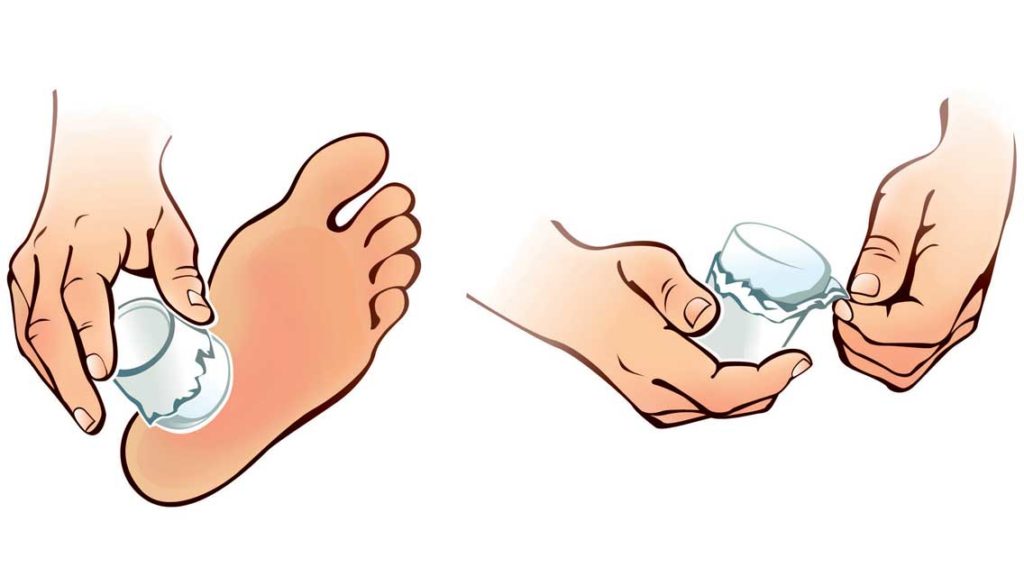 (How to: Freeze water in a paper cup and use it to massage the bottom of your foot. As the ice melts, tear off the paper to expose more ice. Aim for five to seven minutes in the morning and after activity.)
(How to: Freeze water in a paper cup and use it to massage the bottom of your foot. As the ice melts, tear off the paper to expose more ice. Aim for five to seven minutes in the morning and after activity.)
“For severe cases, your doctor might recommend a corticosteroid injection to help reduce pain and inflammation, though the injection can make the plantar fascia a bit more prone to rupture,” says Edward Laskowski, MD, codirector of the Mayo Clinic Sports Medicine Center in Rochester, Minn. And there is a surgical option that cuts the plantar fascia from the heel bone, though this is rarely performed, and experts advise at least a year of noninvasive therapy before even considering that route, which can lead to further complications.
Make an Active Recovery
You can continue to exercise with plantar fasciitis, but Laskowski suggests that you avoid sports that involve heavy pounding and replace them with low-impact activities such as swimming or riding a stationary bike. Runners who find it unrealistic to abandon their sport can try reducing mileage, provided their gait is not affected.
But the rule is, if it hurts, don’t do it. “If you keep going when you feel pain, it’s going to get worse,” says Curt Marcus, PT, DPT, the Chicago-area physical therapist who treated Mary Ann Joyce. Listen to your body and follow a treatment plan consistently. And be patient: About 90 percent of plantar fasciitis cases resolve within two months, so your chances of getting better are excellent.
What Causes Plantar Fasciitis?
Doctors theorize that plantar fasciitis develops when the plantar fascia is stressed, causing small tears to develop in the tissue. These micro-tears cause the fascia to become irritated or inflamed. Because the plantar fascia starts at the heel (just inward from the center of the bone), the strain — and pain — is greatest there.
3 Exercises for Plantar Fasciitis
Most plantar fasciitis treatment programs include stretching to reduce the tension on the plantar fascia and icing to decrease inflammation; others also include foot-strengthening exercises. Medical experts consider the following treatments safe and effective.
1. Calf Wall Stretches

- Lean against a wall, with one foot about an arm’s length behind the other.
- First, stretch the gastrocnemius (the large muscle in the calf) by keeping the back leg straight (A).
- Next, stretch the soleus (the smaller, deeper muscle) by bending the back knee (B).
- Perform three sets for 30 seconds each.
2. Plantar Fascia Stretch
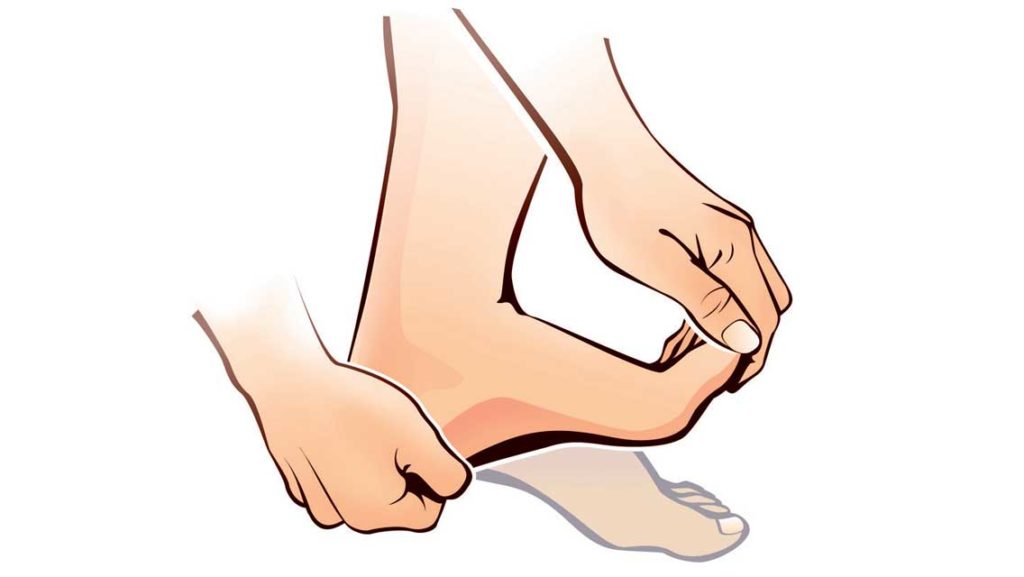
- Sitting with your leg comfortably in front of you (straight or bent), stretch the plantar fascia by holding the heel with one hand and pulling the toes up toward your shin with the other. This helps relieve the pressure in the bottom of the foot by increasing the flexibility of the connective tissue.
- Perform three sets of 30 seconds for each foot every morning and after activity.
3. Towel Toe Curls
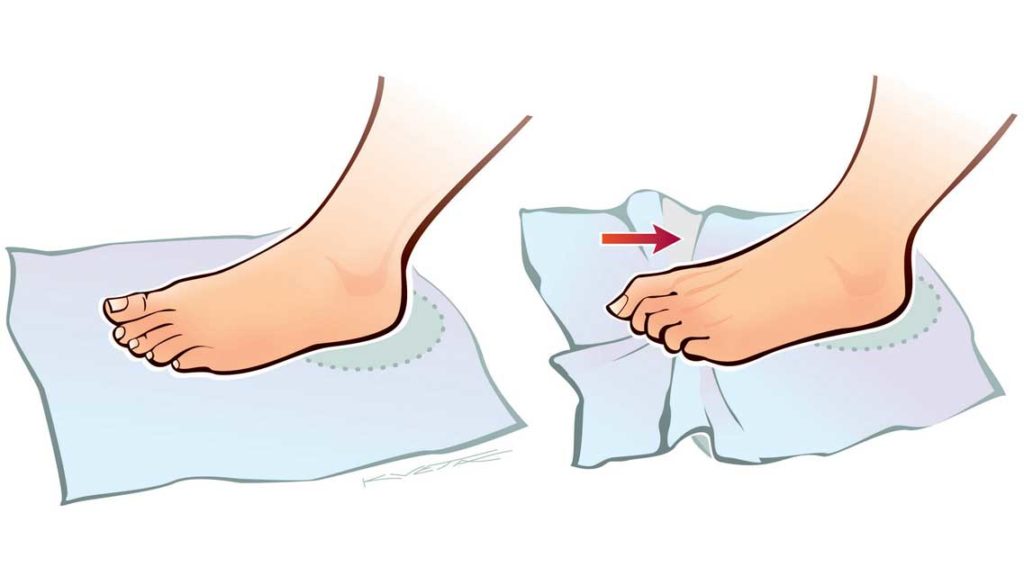
- Do toe curls with a towel to strengthen the small muscles of the feet and take pressure off connective tissue.
- Placing a towel on the floor in front of you, keep your heels on the towel and curl your toes, gripping the towel and pulling it toward you.
- Do two to three sets for 15 to 20 seconds every day.
This article originally appeared as “A Pain in the Foot.”
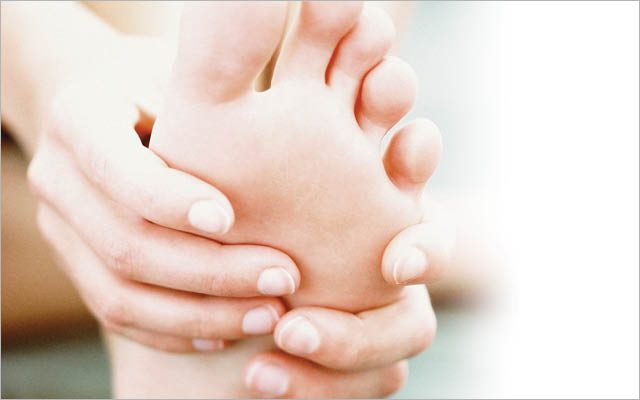
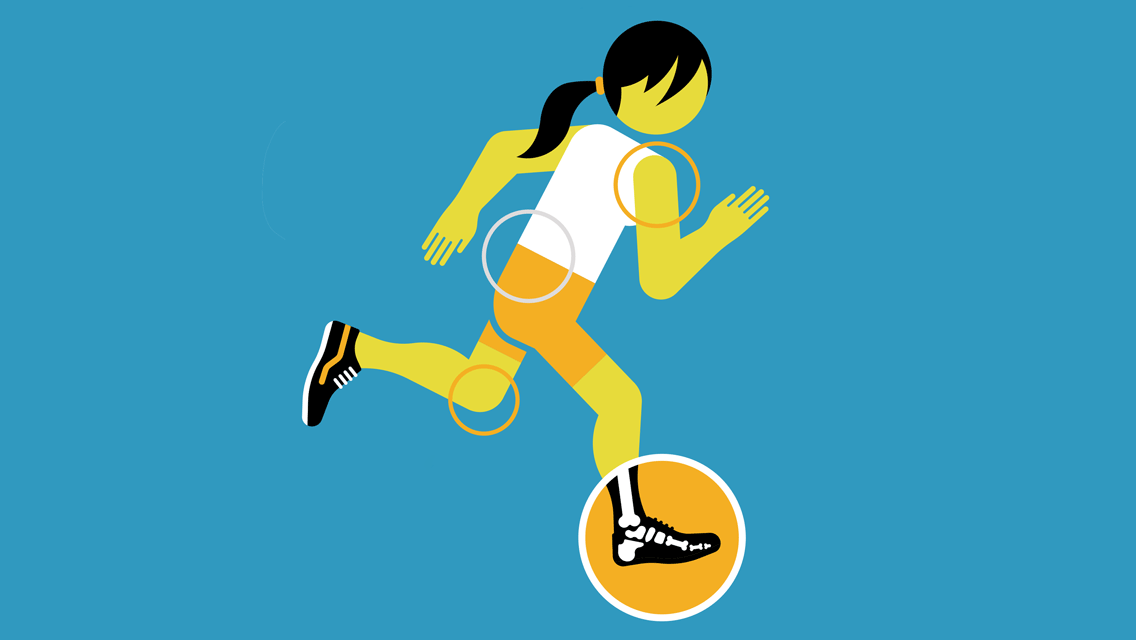
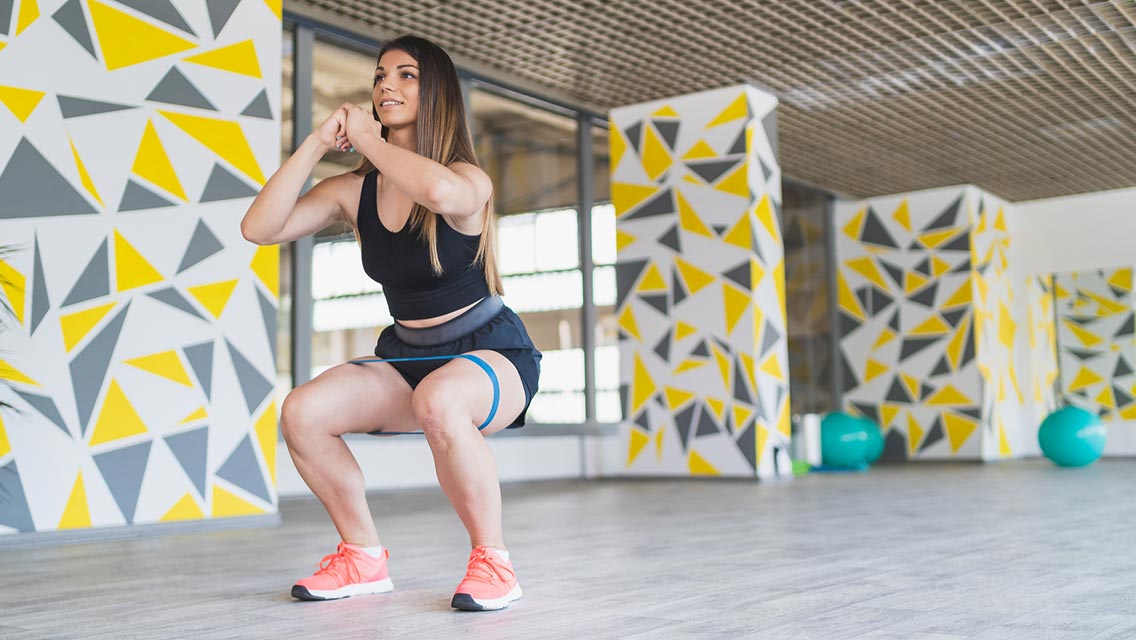
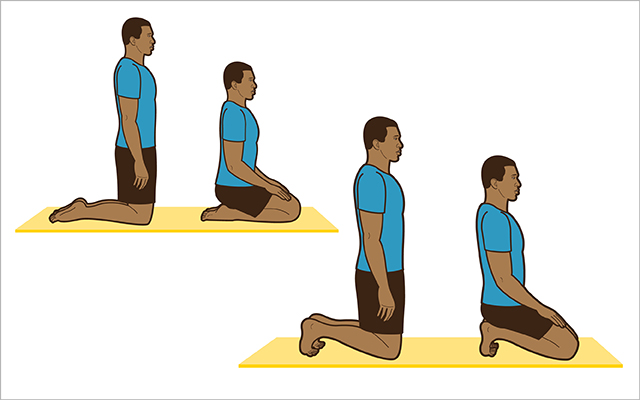
This Post Has 0 Comments